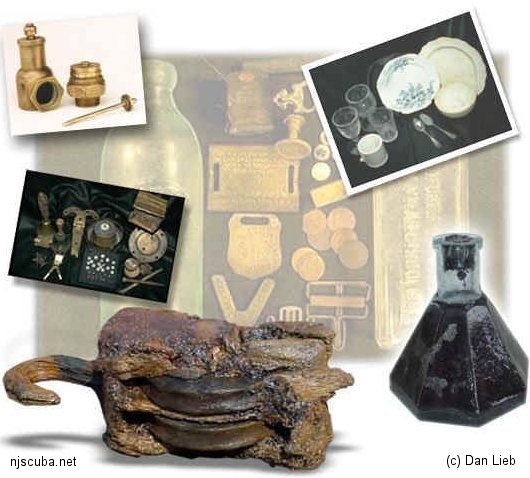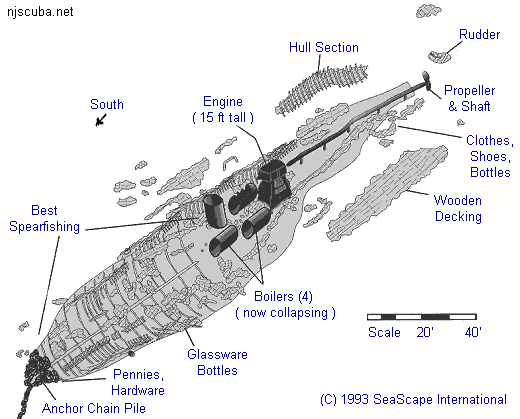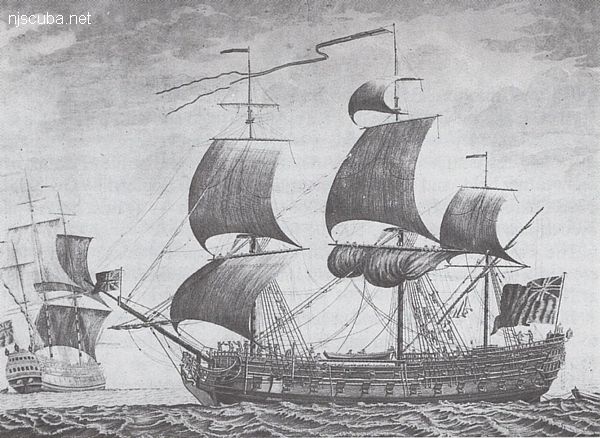Artifacts & Shipwrecks

- Home ...
- Dive Sites ...
- Artificial Reefs ...
- Marine Biology ...
- Artifacts ...
- Gear & Training ...
- Blog ...
- Cozumel ...
Most people think of artifacts as small items of historical and sometimes monetary value that can be found, recovered, restored, and displayed. Artifacts like this include glassware, china and porcelain, brass portholes, coins, fasteners, and many other items that were either part of a sunken vessel's construction, carried as cargo or personal belongings, or simply dumped as garbage.
- Artifacts Contents
- Shipwrecks ...
- Objects ...
- Gallery of Ships ...
- Materials ...
- Miscellaneous ...

However, in a broader sense, any man-made object in the ocean is an artifact, whether you can pocket it or not. The sunken ships and barges that we dive on are artifacts themselves. While the sea quickly destroys many features of a sunken ship, there are a number of significant components of the hull, drive train, and ground tackle that survive to this day, and are often still identifiable, if you know what you are looking at.
Many people don't seem to know what they are looking at. They swim over a bunch of lumps, a high spot here, some kind of thing over there, and maybe find a propeller, but never really know what the pieces are or what they were used for. Being able to identify the basic parts of a ship(wreck) can tell you not only about the history of the site, but is also invaluable in underwater navigation. The basic construction of a vessel's hull, be it wood or metal, also generally survives in some form, and can tell you a lot about the age and type of the wreck.
Small artifacts are arranged here by material - brass, wood, etc. The purpose is not to serve as a trophy case, but to show typical examples of common items. Large artifacts ( those that are too big and heavy to be recovered by a single diver ) are grouped together under Ship's Structures. Descriptions assist in identification and understanding of historical significance. A gallery of common vessel types is also included.
A section on common materials includes those which are most prized as artifacts, including brass, bronze, and glass, not to mention silver and gold. Other materials, such as rubbers and plastics, and miscellaneous metals like stainless steel, aluminum, and lead are included because of their importance in the manufacture of dive gear. Finally, an extensive and highly technical section on the conservation of marine artifacts is included.

